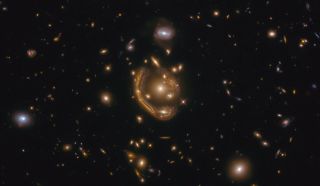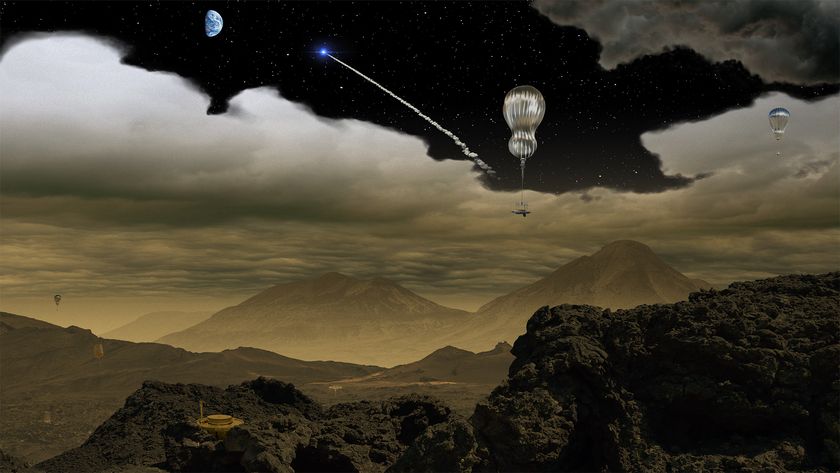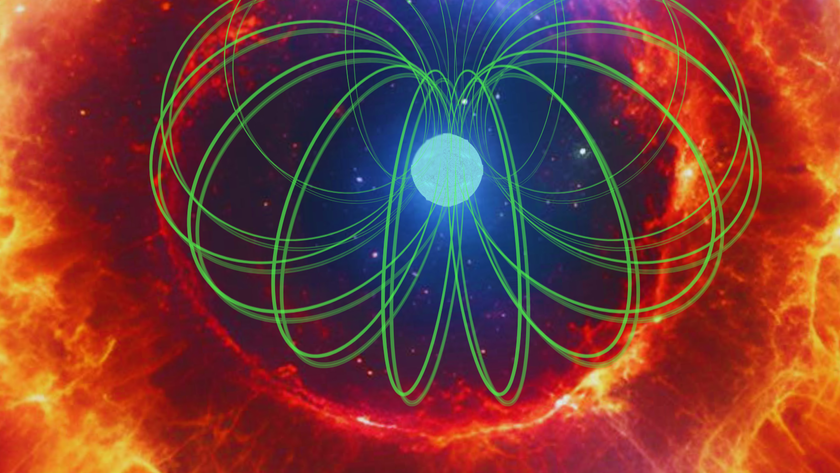Scientists pinpoint age of 'molten ring' in stunning Hubble telescope image
New science from a stunning 2020 Hubble image illuminates the back story behind a shining loop of light.
The circle, also called an Einstein ring after the famous physicist who predicted its existence, came about due to a galactic-scale illusion. The galaxy this so-called "molten ring" curls around is called as GAL-CLUS-022058s and it is located in the Southern Hemisphere constellation of Fornax, the Furnace.
As scientists affiliated with the Hubble Space Telescope wrote in a statement, the big ring is actually a light smear created by a lensing effect that occurs when a foreground object with strong gravity magnifies the light of a more distant galaxy behind it. New research suggests that we are seeing the galaxy in the ring as it was about 9 billion years old, when the universe was only about one-third its present age of 13.8 billion years.
Related: The best Hubble Space Telescope images of all time!

"The detection of molecular gas, of which new stars are born, allowed us to calculate the precise redshift and thus gives us confidence that we are truly looking at a very distant galaxy," Nikolaus Sulzenauer, a Ph.D. student at the Max Plank Institute for Radio Astronomy in Germany and a member of the investigation team, said in a statement released by the European Space Agency, which partners with NASA on the Hubble project.
"This was a time when the universe was going through a 'baby boom,' forming thousands of stars at a prolific rate. The magnified image of the galaxy gives astronomers a close-up glimpse into the distant past," according to the Hubble statement.
Back when the photo was originally released in 2020, scientists said this was one of the most complete Einstein rings ever cataloged. After the photo's publication, astronomers dug up archival data gathered by the European Southern Observatory's Very Large Telescope to calculate the galaxy's distance at 9.4 billion light-years. Further analysis allowed the team to examine stellar clumps of matter in the lensed galaxy, providing hints to its evolution.
Get the Space.com Newsletter
Breaking space news, the latest updates on rocket launches, skywatching events and more!
"The extremely high rate of star formation in the brightest and very dusty early galaxies saw stars being born at a rate a thousand times faster than occurs within our own galaxy. This could help explain the rapid build-up of present day giant elliptical galaxies," Hubble officials said in the same statement.
The initial Hubble observation was conducted by Saurabh Jha of Rutgers, The State University of New Jersey, while the lead investigator of the new research modeling the galaxy's formation was Anastasio Díaz-Sánchez of the Universidad Politécnica de Cartagena in Spain.
Follow Elizabeth Howell on Twitter @howellspace. Follow us on Twitter @Spacedotcom and on Facebook.
Join our Space Forums to keep talking space on the latest missions, night sky and more! And if you have a news tip, correction or comment, let us know at: community@space.com.

Elizabeth Howell (she/her), Ph.D., was a staff writer in the spaceflight channel between 2022 and 2024 specializing in Canadian space news. She was contributing writer for Space.com for 10 years from 2012 to 2024. Elizabeth's reporting includes multiple exclusives with the White House, leading world coverage about a lost-and-found space tomato on the International Space Station, witnessing five human spaceflight launches on two continents, flying parabolic, working inside a spacesuit, and participating in a simulated Mars mission. Her latest book, "Why Am I Taller?" (ECW Press, 2022) is co-written with astronaut Dave Williams.


